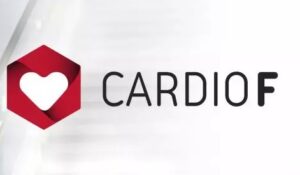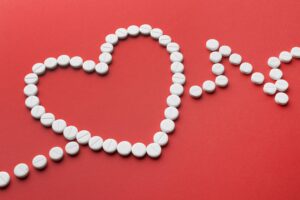At Home with a New Pacemaker
- Home
- »
- Arrhythmia
- »
- At Home with a New Pacemaker

Returning home after having a pacemaker implanted can be a source of anxiety for many patients. It’s important to understand what to monitor during the initial days, as well as the precautions to take when resuming daily activities, including driving, sports, or intimacy.
Understanding the myths and realities about potential interactions between your pacemaker and electronic or mechanical devices commonly used in daily life is also essential. Having this knowledge will help you adapt more easily to living with the device.
Bandage
The type of dressing applied after a pacemaker procedure can vary depending on the hospital or the patient’s needs. There are two main types:
- Transparent dressing: A thin plastic film, often called Opsite.
- Opaque dressing: A thicker dressing similar to a large band-aid, covering an Opsite and adhesive strips (Steri-Strips) to keep the wound edges together.

–Instructions for opaque dressings:
- Remove this dressing two days after the procedure.
- To ease removal, moisten the edges with an alcohol-based antiseptic solution and gently peel it off.
- Do not remove the transparent dressing or Steri-Strips underneath.
–Instructions for transparent dressings:
- Wait ten days before removing the film.
- Gently peel the edges along the direction of the scar, then remove the dressing.
- The Steri-Strips should come off simultaneously; if any remain, remove them gently.
Wound Monitoring
Check your incision daily until it fully heals to detect any signs of infection.
It’s normal to see minor bruising around the surgical site or experience slight pain or discomfort following the procedure. If needed, prescribed pain relievers can help manage these symptoms.

When to Contact a Doctor or Healthcare Provider:
Reach out to a healthcare professional immediately if you notice any of the following:
- Increased pain not relieved by prescribed medications.
- Unusual redness or swelling around the incision.
- Swelling in the arm on the side of the procedure.
- A fever higher than 38°C (100°F).
- Discharge of bloodBlood is composed of red blood cells, white blood cells, platelets, and plasma. Red blood cells are responsible for transporting oxygen and carbon dioxide. White blood cells make up our immune defense system. Platelets contribute to blood or pus from the incision.
- Difficulty to breath.
- New palpitations“Palpitation” is a symptom related to an abnormality in heartbeats. There are several types of arrhythmias. This term is like a surname that encompasses several first names..

Wound Care
The area around the pacemaker implant, including the incision, should remain dry to ensure optimal healing.
- Showers: You may shower three days after the procedure if you have a transparent dressing. Ensure water does not seep under the dressing.
- Baths: If bathing, keep the wound area completely dry.
- Immersion: Avoid activities involving immersion, such as swimming in pools, spas, lakes, or the ocean, until the wound has fully healed, typically within 7 to 10 days.
Following these guidelines helps ensure rapid healing and reduces the risk of infection.
Hygiene
The area where the pacemaker was implanted, including the surgical wound, must remain dry to promote optimal healing.
Showering: You may take a shower after 3 days if you have a transparent dressing. Make sure no water seeps under the dressing.
Bathing: If you choose to take a bath, ensure the wound area stays completely dry.
Immersion: Avoid any activities involving immersion—such as swimming in a pool, hot tub, lake, or ocean—until the wound is fully healed. This usually takes 7 to 10 days.
These precautions are essential to prevent infections and ensure a smooth and quick recovery.

Activities
To allow the pacemaker’s leads to settle properly in the heart, certain movements should be limited during the first few weeks.
- Restrict arm movement on the pacemaker side for 24 hours.
- Avoid lifting your arm above shoulder level for 2 to 4 weeks.
- Refrain from lifting more than 5 kg or engaging in strenuous activities such as tennis or swimming for four weeks.
- Avoid activities like shoveling snow for eight weeks.
After this period, you can generally resume your usual activities.

Intimacy
Most daily habits, including intimacy, can typically be resumed after two weeks.
Driving
It is generally recommended not to drive during the first week after the procedure. In some cases, a longer restriction may be necessary. Consult your doctor to determine when it will be safe for you to drive again.
If in doubt, it’s best to wait until your first follow-up appointment for specific guidance.

Electromechanical Devices
Using household appliances, such as microwaves, is safe.
Ensure that your electrical equipment, including power tools, is grounded and in good condition. This includes gardening tools, workshop tools, and office equipment.
Inform your dentist and any other healthcare professionals that you have a pacemaker so they can adapt their procedures accordingly.
Avoid leaning over a running engine, as certain equipment or large motors may temporarily interfere with the pacemaker. Such interference may cause dizziness or fainting. If this occurs, simply move away from the equipment, and the pacemaker will return to normal function.

Cell Phones
Using a smartphone is safe, provided certain precautions are followed.
- Always keep your phone at least 15 cm (6 inches) away from your pacemaker.
- Avoid placing the phone in a pocket directly over the pacemaker to minimize any potential risk of interference.

Metal Detectors
You can safely pass through security detectors in stores or airports. While the pacemaker may trigger an alarm, its function will not be affected.
It is recommended to carry your pacemaker identification card and present it to security personnel if needed.
























